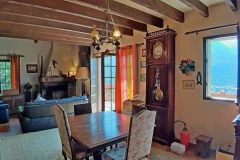Alsace History
When the Romans conquered Alsace in 58 BC, they quickly established viticulture and Julius Ceasar himself claimed the wine made there was the best of wine produced in Gaul. With the decline of the Roman Empire, the region fell to the Allemans, a people who would give it its language. The Franks drove them out, and what is now Alsace was integrated in what was called Autrasia.
After the Caroligians dynasty came the Merovigians kings. Under Charlemagne, the province prospered and the Church's power increased, unfortunately that would not last after his death. As the first European emperor, Charlemagne left a huge empire to his three sons. The division of this vast territory gave Alsace to Louis the Pious. For the next eight centuries, the fate of the province was held closely to that of the Holy Roman Empire.
The 12th and 13th centuries were the golden age of Alsace under the Hohenstaufen Emperors. One of them, Frederick the first (Barbarossa), claimed Alsace to be “the dearest of our family possessions”. It was a period of intense urbanization which saw the birth of a powerful merchant class with increasingly sophisticated tastes.
During the second half of this same century Alsace was embellished with many beautiful Romanesque churches. This artistic flowering took place at a time when Alsace could boast of a number of rapidly expanding towns and cities, each with a wealthy merchant class and powerful guilds and trade associations.
In the early years of the thirteen century Strasbourg won the privileged status of “free imperial city”. The city’s magnificent Gothic cathedral was built under the direction not of the bishop, but of a body controlled by the town council.
French influence in Alsace began at the end of the 1500s during the Wars of Religion and increased during the Thirty Years War when Alsatian cities, caught betweens warring Catholic and Protestant armies, turned to France for much-needed assistance.
Most of the region was attached to France in 1648, and by the time of the French Revolution, the Alsatian people felt more connected to France than to Germany. But Germany still held out hope for a foothold on the western bank of the Southern Rhine, and in 1870, the Franco-Prussian war was launched. It was a humiliating defeat for France, who was forced to cede Alsace and the northern part of Lorraine to the Second Reich. During the time of German rule, citizens were forbidden to speak French and all books, signs and other references to France were destroyed.
Following Germany's defeat in WWI, Alsace and Lorraine were returned to France, and the previous anti-French policies were reversed.. Simple policies of forbidding the use of German and requiring that of French were then begun. Curiously, the region wasn't considered to be subject to some changes in French law from 1871 to 1919, such as the Law of Separation of the Church and the State.
It was partly to prevent another German invasion and to defend this region that the Maginot line was created. It turned out to be totally futile when Hitler's army went around it and invaded France, annexing Alsace and Lorraine in the process.
After the war, Alsace-Lorraine was again returned to France. To make Alsace a symbol of hope for future France-German (and indeed pan-european) cooperation, Strasbourg was chosen as the seat of the council of Europe and for the European parliament.









